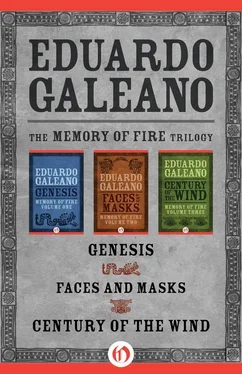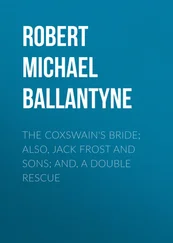328.
Paleari, Antonio. Diccionario mágico jujeño. San Salvador de Jujuy: Pachamama, 1982.
329.
Paliza, Héctor. “Los burros fusilados,” in Presagia, Culiacán, Sinaloa, No. 10, April 1978.
330.
Paoli, Francisco J., and Enrique Montalvo. El socialismo olvidado de Yucatán. Mexico City: Siglo XXI, 1980.
331.
Paramio, Ludolfo. Mito e ideología. Madrid: Corazón, 1971.
332.
Pareja Diezcanseco, Alfredo. Ecuador. La república de 1830 a nuestros días. Quito: Universidad, 1979.
333.
Pareja y Paz Soldán, José. JuanVicente Gótnez. Unfenómeno telúrico. Caracas: Ávila Gráfica, 1951.
334.
Parra, Violeta. Violeta del pueblo. (Javier Martínez Reverte, ed.) Madrid: Visor, 1983.
335.
Pasley, F. D. Al Capone. (Preface by Andrew Sinclair.) Madrid: Alianza, 1970.
336.
Payeras, Mario. Los días de la selva. Havana: Casa de las Américas, 1981.
337.
Peña Bravo, Raúl. Hecos y dichos del general Barrientos. La Paz: n.p., 1982.
338.
Pérez, Ponciana (known as Chana la Vieja). Public testimony in Cuba, Havana, May — June 1970.
339.
Pérez Valle, Eduardo. El martirio del héroe. La muerte de Sandino. Managua: Banco Central, 1980.
340.
Perlman, Janice, E. O mito da marginalidade. Favelas e político no Rio de Janeiro. Rio de Janeiro: Paz e Terra, 1981.
341.
Perón, Juan Domingo. Tres revoluciones militares. Buenos Aires: Síntesis, 1974.
342.
Pineda, Virginia Gutiérriz de, et al. El gamín. Bogotá: UNICEF/Instituto Colombiano de Bienestar Familiar, 1978.
343.
Pinto, L. A. Costa. Lutas de famílias no Brazil. São Paulo: Editora Nacional, 1949.
344.
Pocaterra, José Rafael. Memorias de un venezolano de la decadencia. Caracas: Monte Ávila, 1979.
345.
Politzer, Patricia. Miedo en Chile. (Testimonies of Moy de Tohá and others.) Santiago de Chile: CESOC, 1985.
346.
Pollak-Eltz, Angelina. “María Lionza, mito y culto venezolano,” in Montalbán, No. 2, Caracas, UCAB, 1973.
347.
Poniatowska, Elena. La noche de Tlatelolco. Mexico City: Era, 1984.
348.
Portela, Fernando, and Cláudio Bojunga. Lampião. O cangaceiro e o outro. São Paulo: Traço, 1982.
349.
Pound, Ezra, Selected Cantos. New York: New Directions, 1970.
350.
Powers, Thomas. The Man Who Kept the Secrets: Richard Helms and the CIA. New York: Knopf, 1979.
351.
Presidency of the Republic of Haiti. Law of April 29, 1969. Palais National, Port-au-Prince.
352.
Queiroz, María Isaura Pereira de. Os cangaceiros. São Paulo: Duas Cidades, 1977.
353.
—. História do cangaço. São Paulo: Global, 1982.
354.
Querejazu Calvo, Roberto, Masamaclay. Historia política, diplomática y militar de la guerra del Chaco. Cochabamba and La Paz: Amigos del Libro, 1981.
355.
Quijano, Aníbal. Introducción a Mariátegui. Mexico City: Era, 1982.
356.
Quijano, Carlos. Various articles from Cuadernos de Marcha, Mexico City and Montevideo: CEUAL, 1984–85.
357.
Quiroga, Horacio. Selección de cuentos. (Preface by Emir Rodríguez Monegal.) Montevideo: Ministerio de Instrucción Pública, 1966.
358.
—. Sobre literatura. (Preface by Roberto Ibáñez.) Montevideo: Area, 1970.
359.
Quiroz Otero, Ciro. Vallenato. Hombre y canto. Bogotá: Icaro, 1983.
360.
Rama, Ángel. Las máscaras democráticas del modernismo. Monte-video: Fundación Ángel Rama, 1985.
361.
Ramírez, Sergio, ed. Augusto C. Sandino. El pensamiento vivo. Ma-nagua: Nueva Nicaragua, 1984.
362.
—. Estás en Nicaragua. Barcelona: Muchnik, 1985.
363.
Ramírez, Pedro Felipe. La vida maravillosa del Siervo de Dios. Caracas: n.p., 1985.
364.
Ramos, Craciliano. Memórias do cárcere. Rio de Janeiro: José Olympio, 1954.
365.
Ramos, Jorge Abelardo. Revolución y contrarevolución en la Argentina. Buenos Aires: Plus Ultra, 1976.
366.
Rangel, Domingo Alberto. Gómez, el amo del poder. Caracas: Vadell, 1980.
367.
Recinos, Adrián, trans. Popol Vuh. Las antiguas historias del Quiché. Mexico City: FCE, 1976.
368.
Reed, John. Insurgent Mexico. New York: Simon and Schuster, 1969.
369.
Rendón, Armando B. Chicano manifesto. New York: Macmillan, 1971.
370.
Rengifo, Antonio. “Esbozo biográfico de Ezequiel Urviola y Rivero,” in Los movimientos campesinos en el Perú, 1879–1965. Lima: Delva, 1977.
371.
Retrato do Brasil. (Various authors.) São Paulo: Tres, 1984.
372.
See 445a.
373.
Revueltas, José. México 68: Juventud y revolución. Mexico City, Era, 1978.
374.
Ribeiro, Berta G. “O mapa etno-histórico de Curt Nimuendajú,” in Revista de Antropologia, Vol. XXV, São Paulo: Universidad, 1982.
375.
Ribeiro, Darcy. Os índios e a civilização. Petrópolis: Vozes, 1982.
376.
—. Reception Speech on the Occasion of Receiving Doctorate honoris causa at the University of Paris VII, May 3, 1979; in Módulo, Rio de Janeiro, 1979.
377.
—. Ensaios insolítos. Porto Alegre: L y PM, 1979.
378.
—. Aos francos e barrancos. Como o Brasil deu no que deu. Rio de Janeiro: Guanabara, 1986.
379.
Rivera, Jorge B. “Discépolo,” in Cuadernos de Crisis, No. 3, Buenos Aires, December 1973.
380.
Roa Bastos, Augusto. Hijo de hombre. Buenos Aires: Losada, 1960.
381.
Robeson, Paul. Paul Robeson Speaks. (Edited and with preface by Philip S. Foner.) Secaucus: Citadel, 1978.
382.
Robinson, David. Buster Keaton. Bloomington: University of Indiana Press, 1970.
383.
—. Chaplin: His Life and Art. London: Collins, 1985.
384.
Rockefeller, David. Letter to Gen. Jorge Rafael Videla, in El Periodista, No. 71, Buenos Aires, January 17–23, 1986.
385.
Rodman, Selden. Renaissance in Haiti: Popular Painters in the Black Republic. New York: Pellegrini and Cudahy, 1948.
386.
Rodó, José Enrique. Ariel. Madrid: Espasa-Calpe, 1971.
387.
Rodríguez, Antonio. A History of Mexican Mural Painting. London: Thames and Hudson, 1969.
388.
Rodríguez, Carlos. “Astiz el ángel exterminador,” in Madres de Plaza de Mayo, No. 2, Buenos Aires, January 1985.
389.
Rodríguez Monegal, Emir. Sexo y poesía en el 900. Montevideo: Alfa, 1969.
390.
—. El desterrado. Vida y obra de Horacio Quiroga. Buenos Aires: Losada, 1968.
391.
Roeder, Ralph. Hacia el México moderno: Porfirio Díaz. Mexico City: FCE, 1973.
392.
Rojas, Marta. El que debe vivir. Havana: Casa de las Américas, 1978.
393.
Román, Joséx. Maldito país. Managua: El pez y la serpiente, 1983.
394.
Rosencof, Mauricio. Statement to Mercedes Ramírez and Laura Oreggioni, in Asamblea, No. 38, Montevideo, April 1985.
395.
Rovere, Richard H. Senator Joe McCarthy. New York: Harcourt Brace Jovanovich, 1959.
396.
Rowles, James. El conflicto Honduras — El Salvador y el orden jurídico international. San José de Costa Rica: EDUCA, 1980.
397.
Rozitchner, León. Moral burguesa y revolución. Buenos Aires: Procyón, 1963.
Читать дальше












